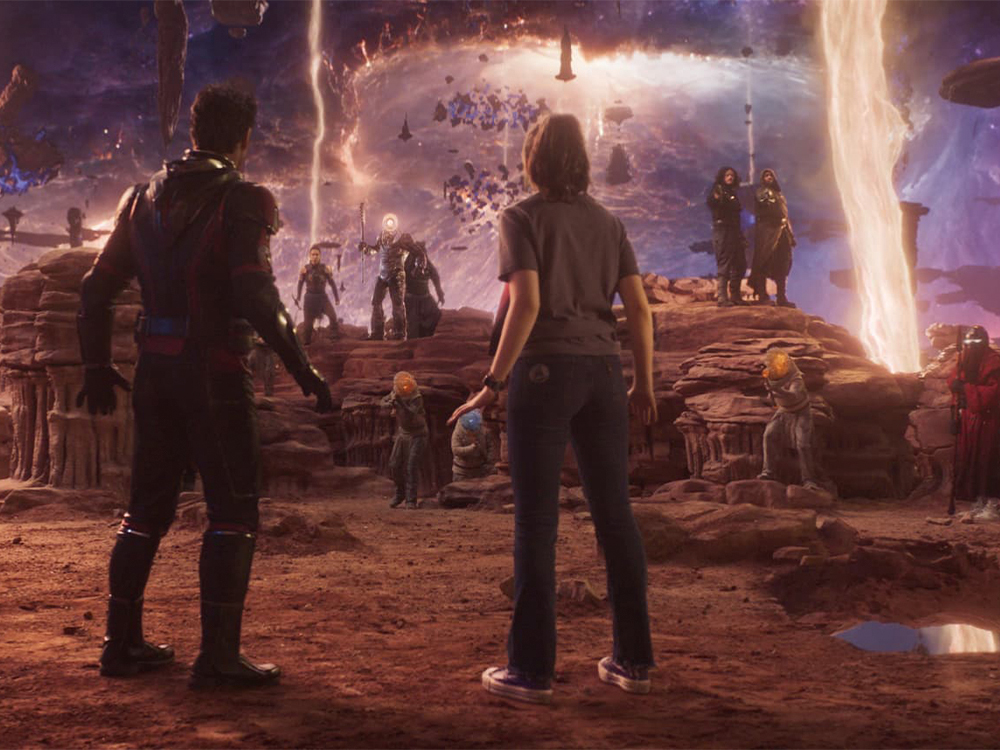Physics Expert: How ‘Quantumania’ Realm Fits into Reality
02.15.2023
 (Photo credit: Marvel Entertainment)
(Photo credit: Marvel Entertainment)
In Marvel’s Ant-Man movies, the main character shrinks to the subatomic level and enters the “quantum realm,” a mysterious microscopic universe where the laws of space and time no longer apply.
The series is rooted in quantum physics, with scientist characters throwing out phrases such as quantum entanglement, quantum phasing and quantum tunneling. All the jargon leads Ant-Man, played by Paul Rudd, to ask: “Do you guys just put the word quantum in front of everything?”
The third installment, “Ant-Man and the Wasp: Quantumania,” which opens in theaters Feb. 17, likely will generate new interest in quantum physics, said Dr. Michael Kolodrubetz, assistant professor of physics in the School of Natural Sciences and Mathematics at The University of Texas at Dallas.
The new movie offers an opportunity to explore the science of Ant-Man and where it veers into science fiction.
“What I thought of when I saw ‘Ant-Man and the Wasp’ was: ‘This is going to be fun – and wrong,’” Kolodrubetz said. “The ‘quantum realm’ is the first thing that would trip me up because – spoiler – there’s no such thing as the quantum realm.”
 Dr. Michael Kolodrubetz
Dr. Michael Kolodrubetz
Quantum physics deals with subatomic particles, which are the building blocks of all matter. So, in that sense, we already exist in a quantum reality, Kolodrubetz said. And because people are made of quantum particles, they are quantum mechanical beings.
Rather than being a place, quantum physics is about size.
“We are made of so many quantum particles, we can’t keep track of them all, so the world appears classical. Classical physics governs our lives because we are so big,” he said.
Ant-Man movies portray the fictional quantum realm as magical and different, stemming from the scientific fact that some physical properties change at the quantum level. For example, the very real concept of quantum entanglement morphs into fantasy in the 2018 movie “Ant-Man and the Wasp.” Ant-Man becomes linked with and receives messages from the original Wasp character, played by Michelle Pfeiffer, who has been lost in the quantum realm for decades. The plot line is based on the scientific fact that quantum particles can become entangled, or linked, and can send information over vast distances.
Even if there was a quantum realm, we wouldn’t be able to travel there.
“There’s zero percent chance we will shrink,” Kolodrubetz said. “There’s a reason we’re the size we are.”
For one thing, the laws of physics dictate that even if a human could shrink to the size of a subatomic particle, they would still have as much mass as a classical human. However, in Ant-Man, this problem is solved by the fictional invention of Pym Particles, which can reduce mass and density.
Nevertheless, quantum physics yields its own fascinating and surprising insights into the universe. Kolodrubetz encourages more high school and college students to consider studying quantum physics, citing growing job opportunities for experts as the number of technologies using quantum physics increases. Now that classical computing technology has nearly reached the limit of the number of transistors that can be placed on a microchip, quantum computing technology can lead to new advances.
To help advance the science and meet the future workforce demands, UTD is developing a new undergraduate minor and a master’s degree in quantum information science and engineering, which would be the first such graduate degree offered in Texas.
“We need physicists and engineers who can develop the next generation of quantum technologies,” Kolodrubetz said. “As technology continues to develop, quantum physics is going to matter more and more.”
–Kim Horner
Tags: Ant-Man, Dr. Michael Kolodrubetz, NSM